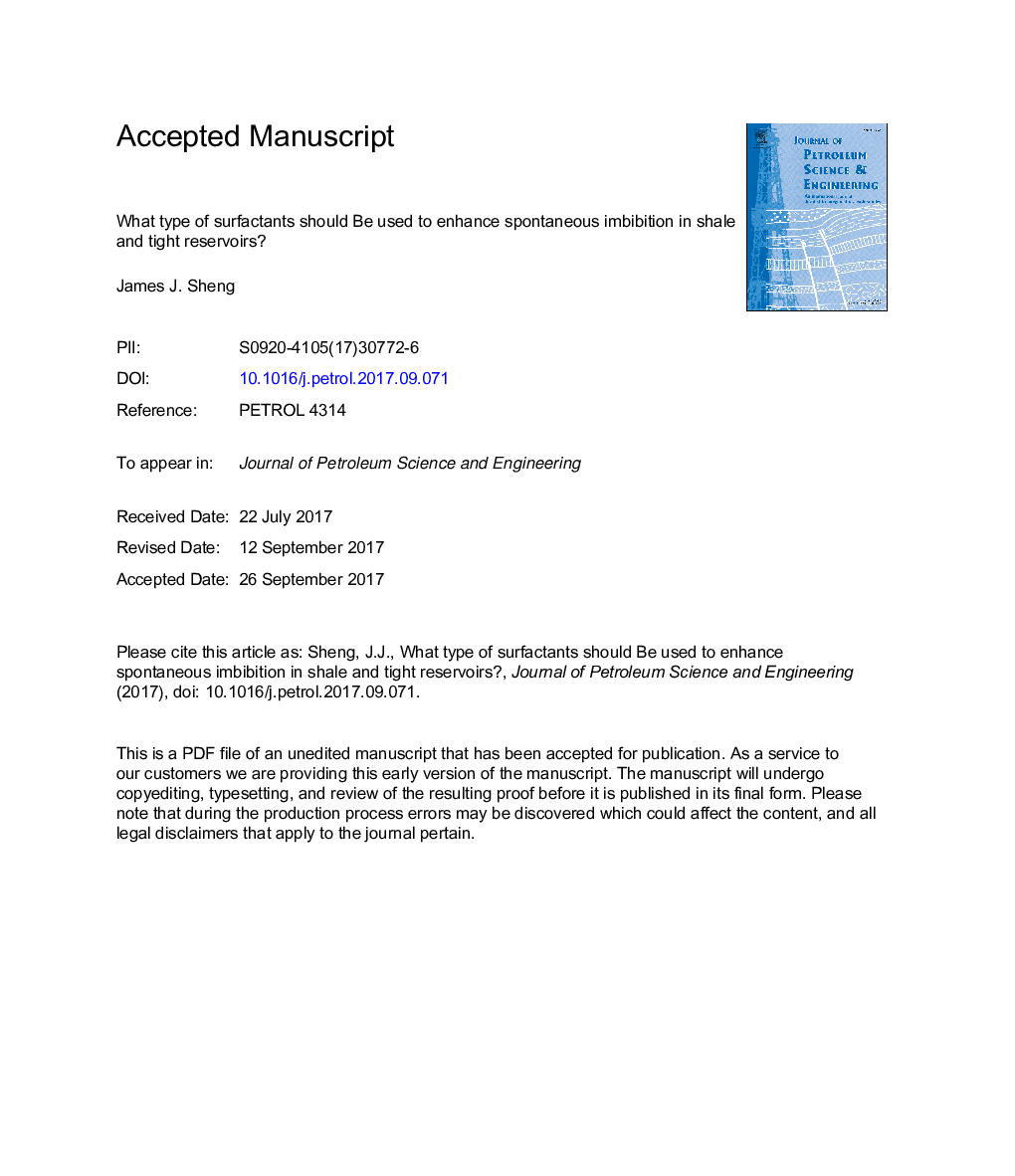| کد مقاله | کد نشریه | سال انتشار | مقاله انگلیسی | نسخه تمام متن |
|---|---|---|---|---|
| 5483893 | 1522782 | 2017 | 30 صفحه PDF | دانلود رایگان |
عنوان انگلیسی مقاله ISI
What type of surfactants should be used to enhance spontaneous imbibition in shale and tight reservoirs?
ترجمه فارسی عنوان
چه نوع از سورفکتانت ها باید برای افزایش جذب خود به خود در شیل و مخازن تنگ استفاده شود؟
دانلود مقاله + سفارش ترجمه
دانلود مقاله ISI انگلیسی
رایگان برای ایرانیان
کلمات کلیدی
موضوعات مرتبط
مهندسی و علوم پایه
علوم زمین و سیارات
زمین شناسی اقتصادی
چکیده انگلیسی
In this paper, we use simulation approach combined with theoretical analysis and published experimental results to investigate the mechanisms of spontaneous imbibition, and to compare the effects of capillary pressure, IFT reduction, diffusion and gravity. Particularly, we compare the effects of wettability alteration and IFT reduction. We find that the initial wettability is the most important factor to control imbibition. When a shale or tight rock is initially water-wet, the imbibition velocity is fast and the imbibition oil recovery is similar (about 10% lower in a simulated case) to that from a conventional rock. In that case, no surfactant is needed and thus the IFT is high oil-water IFT (20Â mN/m in the models). When a shale or tight rock is initially oil-wet, a surfactant is added to change the wettability from oil-wet to water-wet, and the IFT is reduced to 0.008Â mN/m). The imbibition velocity is found to be unrealistically slow. To achieve an oil recovery factor similar to that in the initially water-wet core plug in the lab scale, one million days of imbibition are needed. This results from the slow diffusion process. However, if the wettability is changed from oil-wet to water-wet and the IFT is maintained at a high value (20Â mN/m), the oil recovery factor is similar to that from the initially water-wet core plug. These results show that the surfactant must be able to change wettability but to maintain high IFT to enhance the imbibition in a shale or tight reservoir. Further studies of the effects of IFT reduction without wettability alteration, diffusion and gravity indicate that these mechanisms are not practically effective in shale and tight reservoirs, because either the viscous force cannot be overcome or the processes are too slow. The findings of this paper provide a guide regarding what type of surfactants should be used to enhance the fracture-matrix mass transfer by spontaneous imbibition.
ناشر
Database: Elsevier - ScienceDirect (ساینس دایرکت)
Journal: Journal of Petroleum Science and Engineering - Volume 159, November 2017, Pages 635-643
Journal: Journal of Petroleum Science and Engineering - Volume 159, November 2017, Pages 635-643
نویسندگان
James J. Sheng,
